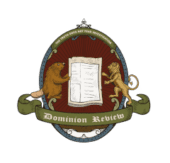Education is failing. It’s heading for skid row. But maybe we can fix it.
“Even though Canada performed very well in the 2018 PISA (Programme for International Student Assessment)… scores have declined in all subjects,” the Fraser Institute reported four years later.
If we care to fix it, and assuming we do, we need to start with a simple question: What is education?
T.C. Eskelson, an education researcher at Hokkaido University, explained in a 2020 paper that only when societies began to store food, to be consumed at a later date, did they suddenly require a cadre of people to keep track of it all. This is where formal education first began.
There was a human evolutionary phenomenon, a defect of sorts, that had to be overcome first.
Humans are extraordinarily good at learning by observation and imitation. We don’t need others to teach us how to shoot a bow, swing a hammer or operate a chainsaw. That doesn’t prevent the usual health and safety committees from insisting we need training in these things to be safe. But, they’re wrong.
The research is clear. “In all human societies, people show the same basic aptitudes for communication, tool use, cooperation, processing food, protecting each other from predators, raising children, and learning,” Eskelson confirmed. No formal education needed just yet.
Our evolutionary capacity to learn artificially constructed representations of language and numerical values is where we fall short. In other words, we need to be taught how to read, write and do arithmetic. Abstract thinking associated with scientific concepts also doesn’t come hardwired in us.
Those who argue that we need to get back to the basics of reading, writing and arithmetic have a good point. They’re right, but they often forget to ask why and how much?
Having an entire population that can read, write and do arithmetic is a grand waste of resources, if it’s not needed.
And every society that stores food for later use, has its own needs.
Some need tax collectors, record keepers and a large population of workers that can pull levers, push buttons and show up on a regimented schedule to produce a lot of manufactured goods and not much more. They may not need innovation, creativity or critical thinking skills. That’s China.
Others need a cooperative, highly organized workforce that produces quality products with unfailing precision—Germany.
Some have a knack for improving upon existing technologies. Their education system is technically innovative and has a culture that rewards inventors and tinkerers—America.
So, should education be for everyone? To be blunt again, no.
Education is the realm of the elite. That was well understood as far back as ancient Mesopotamia. An educated person could count, write, speak well and garner respect. They could also avoid the toil of the fields. Above all, it was best not to create too many educated people if there weren’t enough jobs for everyone.
As Russian-American scientist Peter Turchin wrote in a 2013 paper, “Elite overproduction, the presence of more elites and elite aspirants than the society can provide positions for, is inherently destabilizing.”
Educating everyone, and everyone equally, is not only a waste of resources, it’s dangerous, except when it isn’t.
Which brings us to the second aspect of education. Education is also a socializing phenomenon. It has been used to bring large groups of people into alignment with one another socially and culturally.
In hunting-and-gathering groups, each tribe already understood who they were. They shared common bonds, rituals, and so forth. Each individual did whatever it took, socially and behaviour wise, to be an accepted member. They didn’t need formal education to be socially cohesive.
In larger populations each individual shares less in common. The state however, still needs everyone to be somewhat onboard with similar values and attachments, if not emotionally, then at least with some degree of shared operational allegiances (laws) to the political entity that holds the food, collects the taxes, mounts armies and protects its sphere of influence.
Until the mid-19th century, education was used more to train administrators, and less for social engineering of the masses.
In the mid-19th century that changed. Education became a powerful tool of an emerging political entity—the nation-state.
With advances in technology, the nation-state formed quite rapidly and it had vastly different requirements than the typical imperial state before it. Nation-states needed to create social cohesion where none existed. They had to mold, cajole, coalesce and sometimes force, small groups of people into a large single one. It was important for everyone to think and act in unison.
As American author and teacher John Taylor Gato said in a famous Harper Magazine article from 2003, “schools really are…drill centers for the habits and attitudes that corporate society demands.”
To work effectively, the corporate society—the nation-state—had to take British, Quebecois, Iroquois and Mi’kmaq among others and mesh them into Canadians in 1867. It had to take Bavarians, Westphalians, Lower Saxons and redefine them as Germans in 1870. It had to convince Tuscans, Sicilians, Venetians and Umbrians that they were all Italians in 1871. Later, Hausa, Fulani and Chip were rebranded as Nigerians, and so on.
Cultural cohesion and an obedience to the state came in a myriad of approaches. Latin American countries focused on teaching national songs and dances. France made sure the culture of the French state was transfused through cooking and eating. Germany used a ‘great-people’ narrative.
Sometimes the process went well. Sometimes it didn’t. It was almost never fully complete. The embers of subnational identities are still to this day, warm to the touch, ready to reignite where stoked.
Almost everywhere, education was a national social engineering project for nearly two hundred years. In Canada, as elsewhere, parents, including those of indigenous children, sent their young to be educated in the formal school system knowing it would give them access to upper society. Those most willing to be molded gained the most. Those who resisted were left out. Education was the dividing line.
The nation-state wasn’t always willing to allow options either.
An ancient Celtic language, Breton, was the regional language spoken monolingually by half the population in Lower Brittany, one of France’s western provinces, at the beginning of the 20th Century. With encouragement from the French state, teachers actively humiliated students who spoke Breton and they did so mercilessly for almost one-hundred years. Naturally, most students switched to French. In 1950 there were still one-million speakers of Breton. Today, that number has dwindled to under 200,000, most being over 60 years-of-age. It was exactly what the French Republic wanted.
Education will certainly continue to be used as a social engineering tool to shape language, religion and customs. We’ll have to figure out just how much of it we actually want.
Preferably we do that sooner rather than later since we now have some rather devious tripe in the system. Many educators seem to be demanding subservience, without using much hyperbole, to some seriously heinous ideas, attitudes and dysfunctional beliefs—teaching children sexual deviance, drug use, confusion of identities and self-loathing.
As an anonymous teacher wrote recently in WokeWatchCanada, “things are getting…complicated in these mad times where secrets are kept from parents, religious beliefs are disregarded, victimhood is promoted and competency is punished.”
Parents, fearful of leaving their children in the hands of Machiavellian sycophants, are leaving the public system and seeking alternatives.
Every province in Canada has seen a rise in enrollment in independent schools since 2000. British Columbia has the highest percentage of total enrollment at 13.2% according to the Fraser Institute. Home-schooling has risen as well.
Alternatives are not however, full-proof solutions. Homeschooling, while miniscule in number of students, perhaps best illustrates the Achilles Heel and potential pitfalls of alternative education. American researchers Robert Kuntzman and Milton Gaither (2013) in a comprehensive survey confirmed what most suspected—homeschooling is only as good as the person teaching it. The more educated the parent, the more they have to offer their child but eventually they hit a wall. A majority of homeschoolers end up going back into a formal setting by their eighteenth birthday.
Can the same be said about independent schools? In some cases, yes. In some cases, no.
Either way, the outmigration does not show any sign of being stanched.
Which takes us back to the original question: what exactly is education?
When understood in the context of political and economic needs, it makes it easier for leaders to make the directional moves suitable to those they oversee. If education is also to be used as a tool for social cohesion, leaders will need to determine what and whom exactly, is meant to be pulled together under a single umbrella. That may not involve the nation-state for much longer. That political structure is becoming threadbare and not likely to be the steep-sided bowl into which formal education continues to fit easily.
In Canada, the Acts of Confederation made education the dominion of the provinces. Whether intended or not, it set the stage for a long-term trajectory that was destined to favour localized education. From 1867 that was a slow process. Canada was stable. Education across the country retained strong similarities and a common national understanding with the exception of Quebec.
We are now seeing provinces tailoring curricula more forcefully to their own needs.
Alberta, for example, has long had a culture of rugged individualism with appeals to competitive enterprise, firm handshakes, strong men, strong women, ease of movement over long distances and overcoming technological challenges associated with extreme weather.
An educational system with a focus on technological proficiency, often learned on the job, not in a classroom, would be unsurprising here. It would also have a conservative social etiquette, a tendency toward reputational stoicism, not to mention an anti-Ottawa historicism and most importantly, a single language—English.
British Columbia is the polar opposite. It’s a bit like Switzerland. It’s a land of extreme geography where nothing is consistent. Nothing is the same. And everything changes across short distances. It also has a mixed history of diverse peoples that parallel the geography. Maintaining a single common language is damn near impossible. In order to do well globally and locally, citizens of BC will be corralled, whether they want it or not, toward multilingualism—English, possibly Mandarin, maybe Spanish but almost certainly a local language or two, such as Hul’qumi’num, Nsyilxcen or Ktunaxa.
The rest of Canada will have its own language debates but Alberta and BC offer the two most extreme examples—the need for monolingualism and the need for multilingualism as starting points for their education systems.
Language is strange. It’s omnipotent, and troublesome. It’s the foundation of all education.
It complicates everything, only because it spans both sides of the educational raison d’etre while ignoring the complexity of local culture. Learning high level reading, writing and arithmetic must be done in one, or at least no more than three, standardized languages. Limiting the number of spoken languages also benefits social cohesion. Yet, these needs for standardization and simplification by the state conflict with the complexity of peoples on the ground, so to speak. It’s a conundrum, eternally ripe for tension.
So where do we go from here?
While education officials are trying to clean up their mess, parents and students will continue to look elsewhere. And governments that fail to teach the basics of reading, writing and arithmetic will eventually lose their legitimacy. That doesn’t mean educated people won’t still exist.
The business community is already bypassing government. Global book publishing giant Penguin Random House decided nearly ten years ago they didn’t need employees with a university degree anymore. They’d rather teach talented recruits themselves—a form of apprenticeship revivalism—how to write, edit, do author acquisitions, social networking, marketing, sales, and everything else that is needed, and nothing that isn’t.
If government-funded education continues to push useless departures of inquiry into gender studies, race studies, and how to paint rainbows on crosswalks, it will bleed out and eventually become irrelevant, best to be buried and forgotten.
If the state is to have a role at all, it has a lot of fixing and overhauling to do. What seems most certain is that the future of education is going to be more local, and entrepreneurial.
Whatever that may look like, as human beings we haven’t overcome our evolutionary handicap—we still need others to teach us how to read, write, do arithmetic and understand scientific concepts. As long as we’re storing food for the future, we’ll need formal education to do that. Who will do the educating is increasingly up for grabs.
One thing appears guaranteed. If public education continues to decline, governments face the prospect of being permanently expelled.
If we want a high-quality education system again, the least we can do is stop including everyone, stop pushing questionable ideas, and if nothing else, at least get back to the basics of reading, writing and arithmetic because for Pete’s sake, there’s still food in storage, taxes to collect and the need to say things well.
References
Eskelson, Tyrel C. (2020). “How and Why Formal Education Originated in the Emergence of Civilization,” Journal of Education and Learning; Vol.9, No.2
Fraser Institute, Apr 26, 2023. “Where Our Students are Educated: Measuring Student Enrolment in Canada, 2022.” https://www.fraserinstitute.org/studies/where-our-students-are-educated-measuring-student-enrolment-in-canada-2022
Fraser Institute, Sep 7, 2022. “What International Test (PISA) Tell Us about Education in Canada.” https://www.fraserinstitute.org/studies/what-international-tests-pisa-tell-us-about-education-in-canada
Gato, John Taylor. “Against School: How Public Education Cripples Our Kids, and Why,” Harper’s Magazine, September 2003
Invictus, N., “Education, Enlightenment and School Story,” WokeWatchCanada, July 17, 2023. https://wokewatchcanada.substack.com/p/education-enlightenment-and-school?utm_source=post-email-title&publication_id=515626&post_id=134930043&isFreemail=true&utm_medium=email
Robert Kuntzman & Milton Gaither (2013). “Homeschooling: A Comprehensive Survey of the Research,” Other Education: The Journal of Educational Alternatives, Vol 2, Issue 1, pp.4-59
Turchin, Peter (2013) “Modeling Social Pressures Toward Political Instability,” Cliodynamics: the Journal of Theoretical and Mathematical History. pp.244
All content on this website is copyrighted, and cannot be republished or reproduced without permission.
Share this article!




The truth does not fear investigation.
You can help support Dominion Review!
Dominion Review is entirely funded by readers. I am proud to publish hard-hitting columns and in-depth journalism with no paywall, no government grants, and no deference to political correctness and prevailing orthodoxies. If you appreciate this publication and want to help it grow and provide novel and dissenting perspectives to more Canadians, consider subscribing on Patreon for $5/month.
- Riley Donovan, editor